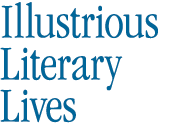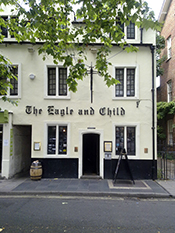
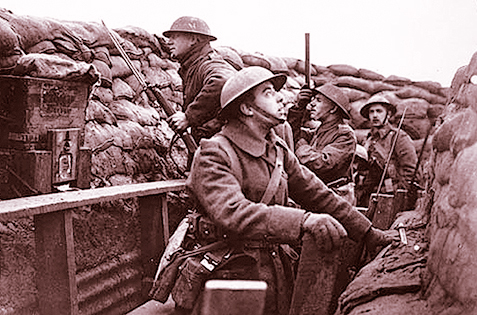
C.S. Lewis, J.R.R. Tolkien and their fellow Inklings came of age in the trenches of the Great War, and their catastrophic experience was a defining feature that shaped their outlook and their work in the years that followed.
/ Published October 7, 2015
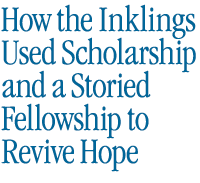
Novelists and scholars C.S. Lewis and J.R.R. Tolkien witnessed firsthand the horrors of trench warfare; they were “war writers,” traumatized by their exposure to the suffering and scarred landscapes of the battlefield and the deaths of many of their close friends.
That is one of the lenses through which Smith faculty members Philip Zaleski, research associate in the religion department, and Carol Zaleski, professor of world religions, create an expansive portrait of the Inklings—a wildly influential literary group that met at Oxford University for more than two decades in the middle years of the 20th century. Many of the Inklings served as soldiers during World War I, and their most productive years as thinkers and writers were during the two decades surrounding and including World War II. For understandable reasons, they thought of the world as “embattled and in the grip of hostile powers,” says Carol Zaleski.
The Zaleskis’ new book, The Fellowship: The Literary Lives of the Inklings: J.R.R. Tolkien, C.S. Lewis, Owen Barfield, Charles Williams (Farrar, Straus and Giroux), is being hailed as the most comprehensive study to date of the lives and writings of four of the distinguished members of this club.
Lewis and Tolkien were two of the most prominent of the Inklings, a literary group of about a dozen men and another dozen who associated with them at various times from the early 1930s into the early 1950s.
How did the experience of war shape the Inklings’ outlook and their work?
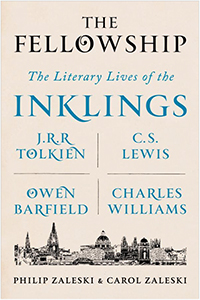
Lewis and Tolkien lost many close friends in World War I. The dangers of battle gave them an abiding appreciation of friendship as something “precious and imperiled,” says Carol Zaleski. “It is no wonder that they prized the fellowship of their literary club and produced, in their fiction, enduring portraits of friendship under fire.”
One of the defining features of their literary outlook was mythopoesis, the practice of creating myths to explore the inner self and to convey eternal truths.
“C.S. Lewis used to say that we read because we seek an ‘enlargement of our being,’” Carol Zaleski notes, “and this is true in a special way for mythopoeic literature, which offers glimpses of other worlds and alternative ways of being, providing consolation and hope in the face of conflict or loss.”
The Inklings believed in the power of words and language to shape, edify and even heal a culture that had lost its way. “Their great hope was to restore Western culture to its religious roots, to unleash the powers of the imagination, to re-enchant the world through Christian faith and pagan beauty,” write the Zaleskis. This effort of recovery informed and motivated their scholarship as well as their fiction—Lewis was a historian of medieval and Renaissance literature, and one of the leading critics of his day, and Tolkien was a scholar of the philology and literature of Old English and related Germanic languages.
Yet both are best known for their imaginative fiction. It would be hard to overstate the popularity of Tolkien’s fantasy, which introduced characters like Gandalf, Aragorn, Legolas, Frodo Baggins, Gollum and Bilbo Baggins into our culture.
Tolkien’s The Lord of The Rings, first published in three installments beginning in 1954, is the second best-selling novel of all time, according to most lists. The Hobbit, published in 1937, is in the top five. And C.S. Lewis’s The Lion, the Witch and the Wardrobe—a classic in children’s literature published in 1950, launching his Chronicles of Narnia series—is in the top 15. Tolkien’s mythological writings (compiled and edited by his son in The Silmarillion and the 12-volume History of Middle-earth) and Lewis’s Space Trilogy and other works of speculative fiction have a devoted following as well.
They are the progenitors of a fantasy fiction genre that continues to attract fans by the millions. “Without the Inklings there would be no Dungeons & Dragons (and the whole universe of online fantasy role-playing it produced), no Harry Potter....Hollywood, the voice and arbiter of popular culture, has shifted dramatically toward mythopoeic tales,” write the Zaleskis.
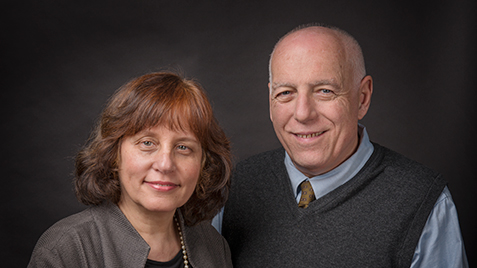
Carol Zaleski and Philip Zaleski
Philip Zaleski, an avid reader of science fiction and fantasy literature as a teenager, became enchanted with Tolkien and Lewis early in life. Carol Zaleski came to know and love these authors in college. Since the Zaleskis today write on religious themes, it made sense for them to explore a group of intellectuals for whom scholarship, storytelling and religious reflection formed a seamless whole.
Though it would be a mistake to label the Inklings simply as “Christian writers,” as individuals and as a group they took their Christianity, which expressed itself in different forms, very seriously. They were “acutely aware of the moral, spiritual and intellectual struggles involved in choosing between good and evil and in learning to discern what’s right,” says Philip Zaleski.
They believed that ours is a fallen world, but they also believed in redemption—and went against the modernist stream by committing what the Zaleskis call the literary “heresy of the happy ending.” A Catholic priest helped to raise Tolkien (who was orphaned at a young age) and, aside from a few brief periods in his life, Tolkien rarely missed daily Mass. Tolkien influenced Lewis’s decision to abandon midlife atheism and was disappointed when Lewis turned to Anglicanism rather than Catholicism.
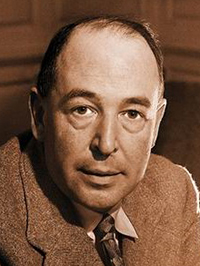
C.S. Lewis
Lewis is celebrated for his BBC radio broadcasts during World War II, in which he spoke of the reasonableness and beauty of Christian themes as a way of promoting public morale in the face of war. He became, as a result of these talks and the books that followed, the most popular Christian thinker of his age, but he was never wholly comfortable with the role of religious apologist. “No doctrine...seems to me so spectral, so unreal,” Lewis said, “as one that I have just successfully defended in a public debate.” His greatest contribution, say the Zaleskis, lay in his capacity to link his Christian themes to a deep understanding of Western culture and literary expression.
Similarly, Tolkien’s scholarship was of a piece with his spiritual and literary aspirations. A leading scholar of English and Germanic languages, Tolkien started his career as a lexicographer contributing to the Oxford English Dictionary, specializing in words beginning with w. Years later, he delivered a groundbreaking lecture on Beowulf, establishing the literary (rather than merely antiquarian) significance of the epic poem, which is well over a thousand years old. He believed that the development of English mythology had been cut off by the Norman invasion of 1066; while he was working as a philologist to recover the linguistic and cultural significance of various Old English texts, he was also at work on an imaginative mythology of his own devising, “for England.” As Tolkien wrote to his publisher, “I had a mind to make a body of more or less connected legend, ranging from the large and the cosmogonic, to the level of romantic fairy-story...which I could dedicate simply to: to England; to my country.”
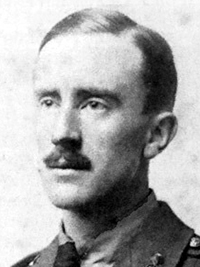
J.R.R. Tolkien in 1916.
The Lord of the Rings—and the vast “legendarium” that informed it and was only partially published in Tolkien’s lifetime—was the quintessential expression of this drive for using the power of story to engage the collective imagination. “Tolkien was the first prose writer to create, single-handedly, a comprehensive mythology, complete with invented languages, complex geography and consistent nomenclature. It was an unprecedented achievement,” says Carol Zaleski.
Tolkien’s mythopoeic narratives are set not in distant worlds but in our own world in a prehistoric past. Because of their imagined antiquity, these tales have no explicit Christian or biblical references; nonetheless they are filled with biblical anticipations. The creation account in Tolkien’s Silmarillion is a monotheistic one, in which the universe is called into being through a musical theme propounded by “the One,” with subordinate creative roles played by a council of angelic beings; thus Tolkien shows how creation might have been pictured by the archaic, pre-biblical peoples (Elves, humans) of his invented history. At the same time, this creation account is wholly consistent with Tolkien’s own Catholic understanding, and in keeping, Carol Zaleski says, with his theory that fairytales and myths of all epochs contain patterns that foreshadow the Christian gospel.
Elements of The Lord of the Rings go back to the trenches of the Battle of the Somme, and the horrific slaughter and maiming of more than a million young men during the summer and fall of 1916. Tolkien was there. By the end of what was then known as the Great War, two years later, all but one of his close friends had died.
Almost as a coping mechanism, during lulls in the fighting Tolkien drew on a love of made-up words that the Zaleskis trace to his childhood urge to invent a new language with its own syntax and grammar. The practice afforded him a “refuge from the horror going on all around him,” says Carol Zaleski. Many years later, after he was firmly established as a scholar of language and literature, Tolkien created in his mythopoeic novels a secondary world to go along with this language.
There are other ways in which the Inklings’ literary output goes back to the experience of the World Wars and the degradation they wrought upon modern society. Their mythopoeic project can be seen as “their way of responding to a cultural and environmental crisis so as to recover a sense of continuity,” says Carol Zaleski. “They were not curmudgeons trying to turn the clock back, but modern thinkers, seeking to recover the traditions of the past in order to live sanely and gracefully in the times we have been given.”













